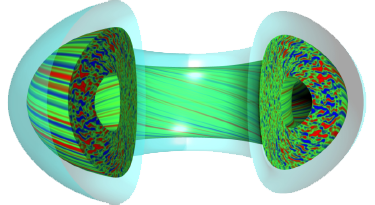Speaker
Description
Physics understanding of fusion plasmas has made significant advances, but further progress towards steady-state operation is challenged by a host of kinetic and MHD instabilities. Alfvén eigenmodes (AE) are a class of mixed kinetic and MHD instabilities that are important to identify and control because they can reduce confinement and potentially damage machine components. In the present work, we utilize an expert-labeled database of DIII-D discharges and use (deep) recurrent neural networks such as reservoir computing networks (RCN) to classify five types of AE modes, namely, BAE, EAE, LFM, RSAE and TAE. To deploy the model on a high-throughput FPGA accelerator for integration in the real-time plasma control system, we consider a data processing pipeline with minimum complexity. We trained a simple yet effective RCN on 40 raw ECE diagnostic channels down-sampled from 500 kHz to only 2 kHz. Our experiments show that such a model achieves a true positive rate of 91% with a false positive rate of only 7%. Moreover, as a preliminary step towards locating Alfvén eigenmodes spatially inside the plasma, we focus on processing the ECE spectrograms, which naturally have high levels of noise. State-of-the-art deep learning techniques for enhancing the images need to see both noisy and clean versions of the data during the training, which is not feasible in the current application. To alleviate this issue, we first employ a pipeline of existing image processing techniques to partially denoise the spectrogram. The output of this pipeline is then considered as a target for autoencoders to further enhance the spectrograms. These enhanced images are used to develop spatio-temporal data-driven models in a real-time control strategy for detecting shape and location of instabilities inside the plasma.
| Affiliation | Ghent University |
|---|

